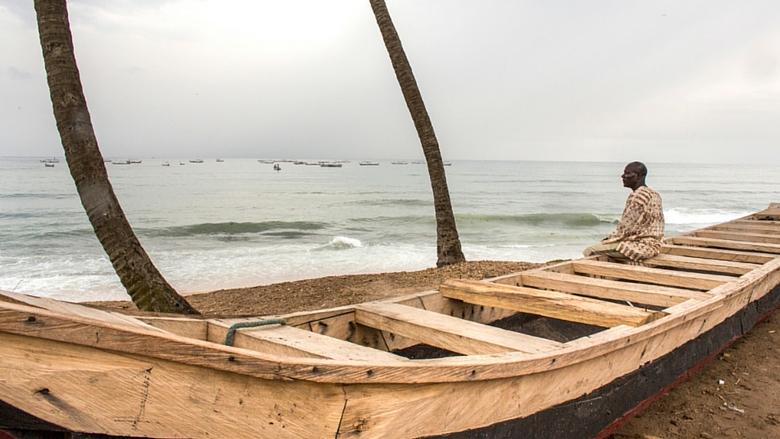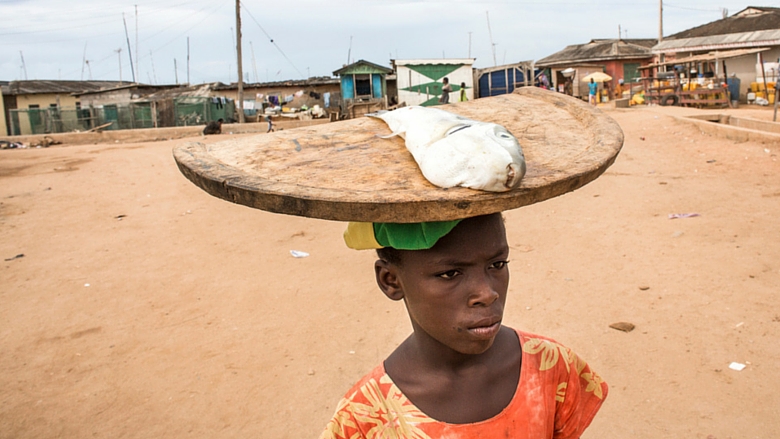In a brightly painted cement hut on the beach near dozens of sun-bleached boats, a few dozen fishermen are huddled in a meeting.
The news isn’t great.
“The last time I was on the boat was two weeks ago,” said fisher Kofi Nyamegbo, who is in his fifties. “I don’t know anymore when the fish will come.”
“Some fishers are spoiling the sea,” he said, referring to those who use effervescent chemicals, like laundry detergent or bleach, as well as dynamite to stir the fish up and bring them to the surface. “They have to stop the dynamite fishing or there will be no fish for the rest of us.”
The fishers say that Moree, an ancient village in Ghana of about 25,000 people and seven beaches, is where fishing was born.
Today, West Africa’s artisanal fishers use the same kind of striking, wooden canoes they used hundreds of years ago. They can be up to 70-feet long, but these dug out canoes are highly vulnerable to the wrath of the sea. But in recent years, there have been noticeably fewer fish.
, including some 135,000 fishers in the marine sector—92 percent of whom are artisanal fishers. Africa’s artisanal fishing communities need solutions to cope with diminishing returns from an already perilous livelihood. And while technology is revolutionizing sustainable fishery management, safety and transparency, small-scale fishers have been mostly on the outside of this movement.
Now academics, fisheries specialists and development partners are cooperating to address the needs of small-scale fishers.
The World Bank’s West African Regional Fisheries Program (WARFP), financed by the World Bank's IDA Fund for the poorest countries, the Global Environment Facility, and other partners, aims to improve fisheries management and is already increasing fish stock and health in West Africa. The program is also exploring innovative ways to keep fishers safe. Recent efforts have been focused on one question: Can a battery-operated satellite transponder device smaller than a coffee thermos keep fishers safe at sea and improve fisheries management in the long run?
For the past decade, large vessels have been fitted with boat-to-boat and boat-to-shore communications. Regulations are in place that require boats of a certain size to utilize this technology. These systems have allowed ocean observers to track trends in Illegal, Unreported and Unregulated Fishing (IUU), leading to better enforcement of maritime laws. Recently, the EU scored a significant success in regulating European-flagged vessels in African waters.


